
Acharya Vidyasagar was an influential Indian Digambara Jain acharya (monk), credited with having brought about a revival in educational and religious activities in Digambara Jainism. He wrote the epic Hindi poem Mukamati.
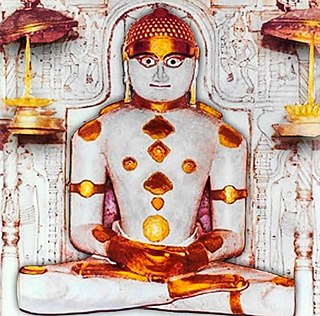
Rishabhanatha, also Rishabhadeva, Rishabha or Ikshvaku, is the first tirthankara of Jainism. He was the first of twenty-four teachers in the present half-cycle of time in Jain cosmology, and called a "ford maker" because his teachings helped one cross the sea of interminable rebirths and deaths. The legends depict him as having lived millions of years ago. He was the spiritual successor of Sampratti Bhagwan, the last Tirthankara of the previous time cycle. He is also known as Ādinātha, as well as Adishvara, Yugadideva, Prathamarajeshwara and Nabheya. He is also known as Ikshvaku, establisher of the Ikshvaku dynasty. Along with Mahavira, Parshvanath, Neminath, and Shantinath, Rishabhanatha is one of the five Tirthankaras that attract the most devotional worship among the Jains.

Acharya Shri Shantisagar Ji (1872–1955) was an Indian Acharya of the Digambara monk faith. He was the first Acharya (preceptor) and a leader of his digamber sect in the 20th century. Shanti Sagar ji revived the teaching and practice of traditional Digambara practices in North India. He was lustrated as a kshullaka into the Sangha by Devappa (Devakirti) Swami Ji. He took his ailaka deeksha before an image of the Tirthankara Neminatha. In about 1920, Shantisagar Ji became a full muni (sadhu) of the Digambara. In 1922, at Yarnal village, Belgaum district, Karnataka, he was given the name "Shanti Sagar Ji".
Sadalga is a municipal town in Chikodi Taluka in the Belagavi district of Karnataka, India. It is best known as the birth place of Digambar Jain Acharya Shri Vidyasagar Ji Maharaj. His home is recently converted into a museum.
Jainism is an ancient Indian religion belonging to the śramaṇa tradition. It prescribes ahimsa (non-violence) towards all living beings to the greatest possible extent. The three main teachings of Jainism are ahimsa, anekantavada (non-absolutism), aparigraha (non-possessiveness). Followers of Jainism take five main vows: ahimsa, satya, asteya, brahmacharya (chastity), and aparigraha. Monks follow them completely whereas śrāvakas (householders) observe them partially. Self-discipline and asceticism are thus major focuses of Jainism.
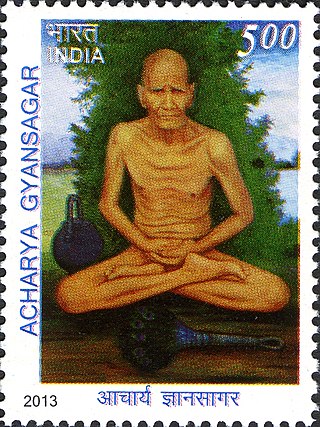
Acharya Jnansagar or Gyansagar (1891–1973) was a Digambara Jain Acharya of 20th century who composed many Sanskrit epics. He initiated Acharya Vidyasagar in 1968 as a monk and 1972 as an Acharya.
Yati, historically was the general term for a monk or pontiff in Jainism.

Jainism is an Indian religion which is traditionally believed to be propagated by twenty-four spiritual teachers known as tirthankara. Broadly, Jainism is divided into two major schools of thought, Digambara and Śvetāmbara. These are further divided into different sub-sects and traditions. While there are differences in practices, the core philosophy and main principles of each sect is the same.

Pandit Niraj Jain was a scholar of Jainism, archaeologist, poet and speaker. His contributions to Jain studies span nearly 60 years. He was also an expert on Urdu poetry, which is unusual for a Jain scholar. He was associated with several organisations. He also lectured on the Ramayana He was a proponent of preserving historical nature of ancient temples. He had travelled and lectured widely in India and overseas .

Muni Tarun Sagar was an Indian Digambara monk. His lectures are termed Kadve Pravachan because they can be candidly critical of common practices and views. His lectures have been compiled and published in book series also titled Kadve Pravachan. Excerpts from his discourses are often published by newspapers. Unlike most other Digambar Jain monks, his audience often included a majority of non-Jains. His discourses often addressed family or society issues.
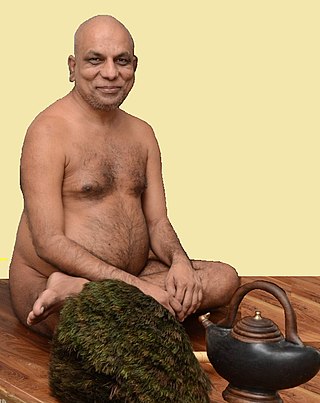
Munishri Pramansagarji Maharaj is a Digambar monk of Terapanth sub-sect. He is an able disciple of Acharya Shri Vidyasagar Ji Maharaj. He has set free the religion from traditional abstruseness and made it practicable in life. Through his sermons and initiatives, the process of a qualitative change in society has begun. He led a campaign to save the Jain tradition of Santhara also known as Sallekhana in the year 2015, in which millions of Jain community members took out massive silent rallies in several cities and towns all over the world against the Rajasthan High Court decision. Gunayatan is one of his important religious initiatives which is going to become a centre for self-development in the true sense. His pravachans and Shanka Samadhan programme are aired on Jinvani Channel and Paras TV Channel.
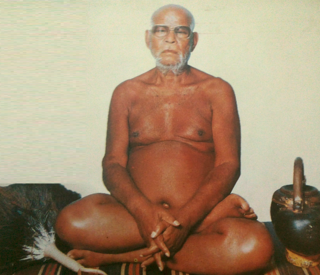
Acharya Deshbhushan was a Digambara Jain Acharya of 20th century who composed and translated many Kannada scriptures to Hindi and Sanskrit. He initiated and elevated several Jain monks and nuns like Shwetpichhi Acharya Vidyananda ji and Gyanmati Mataji. He is renowned for his remarkable translations of Kannada scriptures to Sanskrit and Hindi. He is the first Digambara Acharya to visit and address the Indian Parliament in the year 1974 along with the Prime Minister Indira Gandhi.

Atishay Kshetra Lunwa is a famous Jain pilgrimage site situated 70 km from Jaipur. Lunwa is a small village in the Nagaur district of Rajasthan, India. The temple, one of two Jain temples in Lunwa, was established in 1672. लूणवा जैन मंदिर मेंथा पर अवस्थित है

Muni Shri 108 Kshamasagar ji Maharaj was a Digambara monk initiated by Shri 108 Acharya Vidyasagar ji Maharaj. He is also known for his poetry and writings which are widely quoted.

Navagarh is a Jain Tirth in India. It is located at the Nabai village near Sojna in central India in Uttar Pradesh, just across the border from Madhya Pradesh. It is 65 km east from Lalitpur and 110 km north from Sagar. This ancient cite was excavated in 1959. It is the only tirth in India where the main deity is the ancient image of Lord Aranatha, preserved in the ancient underground chamber.
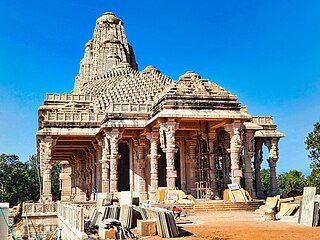
Sarvodaya Jain temple is a Jain temple in Amarkantak town in Anuppur, Madhya Pradesh. Nearest airport is Raipur C.G. and nearest railway station is Pendra road C.G. You can also reach easily from Bilaspur CG and Anuppur MP, by Car. Rental car, taxi and auto rickshaw are easily available From Pendra Road. Many Lodges, Ashram and Hotels are available in Amarkantak and as well as Pendraroad. Amarkantak is a well-known Teerth. It is famous for beautiful Nature, mountains and climate. Ma Narmada Temple, Narmada kund, Kapil dhara, Dudh Dhara, Son muda, Mai ki bahiya, Durga dhara, Bhrigu kamandal, Arandi ashram, Kalyan ashram and many more attractive places are Beauty of Amarkantak. Beauty and architecture of Sarvoday Jain temple is also remarkable.

Bade Baba Temple, Kundalpur is a temple in Kundalpur, a pilgrimage town for Jains, in Damoh district of Madhya Pradesh. It is 35 km from Damoh. The Bade Baba Temple was formally known as Shri Digamber Jain Siddha Kshetra Kundalpur.
Vimalsagarsuri is an eminent and popular Jain monk and Acharya of the Tapa Gaccha of the Śvetāmbara sect of Jainism. He belongs to the lineage of Acharya Buddhisagarsuri.
Mithilapuri Jain Teerth is a sacred place in the tradition of Jainism. It is believed to be the birthplace and the penance place of the two Jain Tirthankars Bhagwan Mallinath Swami and Bhagwan Naminath Swami. According to the Digambara sect of Jainism, it is located at the Sursand town of Sitamarhi district in the Mithila region of Bihar. It is very close to the line of the Indo-Nepal International Border at the outskirts of the Sursand town. Similarly for the Śvetāmbara sect of Jainism, it is believed to be located at Dumra suburb in the city of Sitamarhi in the Mithila region.















